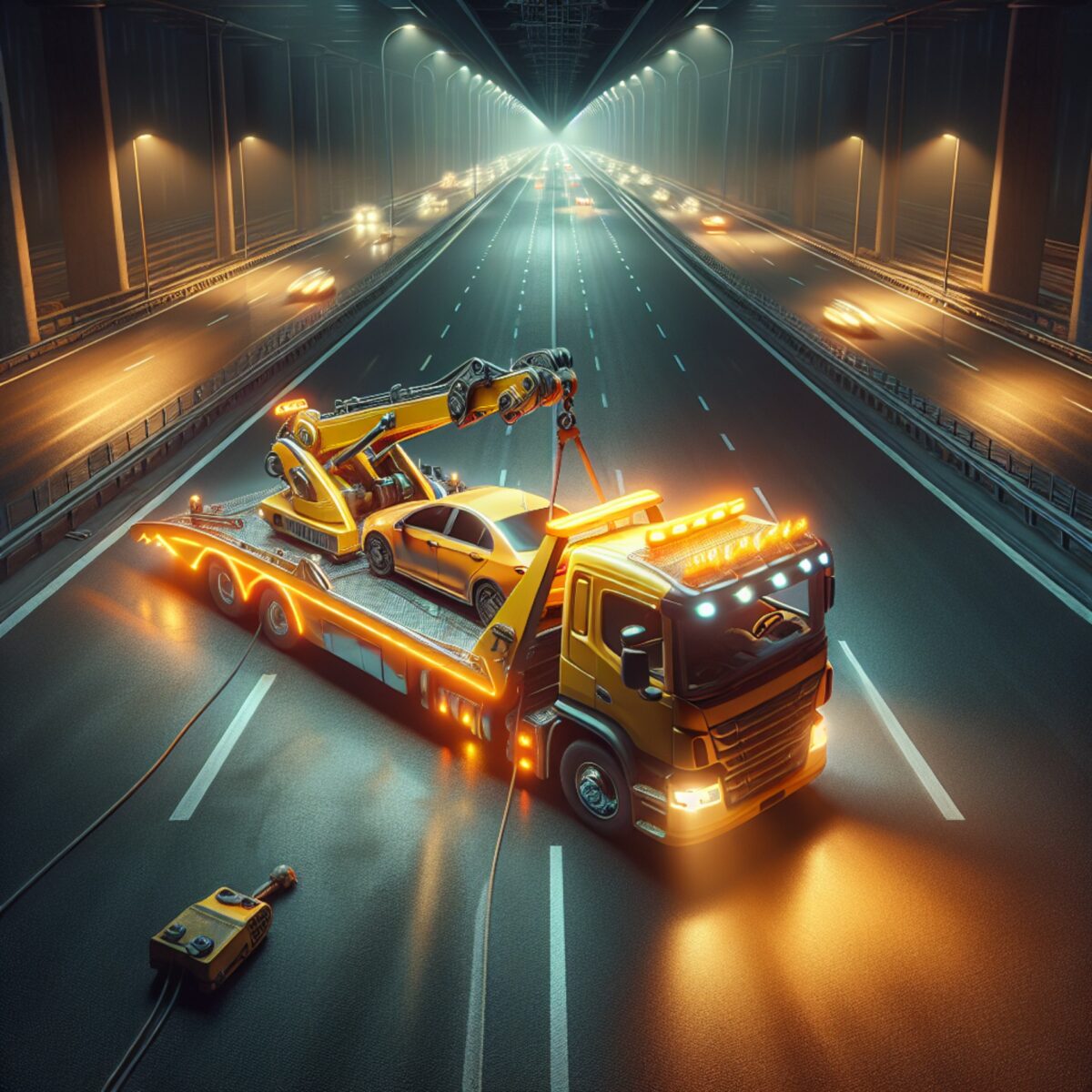The Evolution of Roadside Service : How Technology is Transforming Roadside Assistance?

Think about hitting the road, what comes to mind? Perhaps the thrill of a new adventure, the convenience of commuting, or the simple joy of a drive. But sometimes, the unexpected happens – a flat tire, a dead battery, or even worse, an engine that refuses to start. These are moments when roadside assistance becomes not just a service, but a lifeline.
Lately. This was not the case…when someone encountered a vehicle issue, they often relied on the kindness of strangers or other motorists passing by. This could involve flagging down passing vehicles and hoping they would stop to offer help or to find assistance. Even In some cases, drivers had to leave their vehicles unattended to seek help on foot. This could mean walking to the nearest town or gas station, which could be miles away depending on the location and road conditions. Our elders face it hence they know it very well and that’s why they always tell us to be prepared. This is where technology stands today in this industry. It makes us prepared in advance.
When we talk about “technology,” we’re referring to a broad concept that encompasses tools, systems, methods, and processes created through scientific knowledge and applied to practical purposes. As it benefits different industries in whole new ways. Roadside service has to evolve with it. Convenience is the prime feature of any business.
- Roadside Assistance: A Necessity in Motion
Roadside assistance has been around for decades, evolving from a simple concept to a sophisticated service network that spans the globe. Initially, it meant relying on local mechanics or towing companies to come to your aid when your car broke down. Today, it’s a seamless blend of technology and service, designed to get you back on the road with minimal disruption.
- The Traditional Approach: From Mechanics to Mobile Units
In the early days, roadside assistance often involved a phone call to a local garage or towing service. A mechanic would arrive with basic tools and equipment to assess and hopefully fix the problem. Flat tyre assistance or jump-starting a car were common tasks, handled manually and sometimes with a bit of elbow grease.
- How technology boon the roadside assistance service
The landscape of roadside assistance began to change with the advent of technology. Mobile phones became widespread, enabling quicker communication between drivers and service providers. GPS tracking allowed for precise location pinpointing, ensuring help could find you no matter where you were stranded.
- Smart Solutions
Fast forward to today, and roadside assistance is at our fingertips – literally. With the tap of an app, you can summon help directly to your location. Services like flatbed towing and emergency fuel delivery are just a few clicks away. Companies like Tow Tow in Detroit have embraced this shift, offering efficient and reliable assistance with a modern twist.
- Efficiency and Safety
Technology not only enhances convenience but also boosts safety. For instance, dispatch systems can analyze data to predict service demand in specific areas, ensuring quicker response times during peak hours or adverse weather conditions. Moreover, real-time tracking of service vehicles provides peace of mind, knowing help is on its way and precisely when it will arrive.
- Integration of AI and Automation
Artificial intelligence is another frontier reshaping roadside assistance. AI algorithms can diagnose vehicle issues remotely, sometimes even before you notice a problem. This proactive approach not only saves time but also prevents potential breakdowns through predictive maintenance alerts.
- Environmental Considerations
The evolution of roadside service isn’t just about efficiency – it’s also about sustainability. Companies are increasingly adopting eco-friendly practices, such as using electric or hybrid vehicles for roadside assistance. This not only reduces carbon emissions but also sets a positive example for environmentally responsible service delivery.
- Customer-Centric Approach: Personalization and Feedback
Modern roadside assistance providers understand the importance of customer experience. They use feedback mechanisms to continuously improve service quality, ensuring that each interaction is as smooth and helpful as possible. Personalization extends to service preferences too – whether you need a car flatbed towing or a quick tire change, options are tailored to meet your specific needs.
- Advanced Vehicle Recovery Techniques:
Towing methods were often rudimentary, relying on manual labour and basic equipment. With advancements in vehicle recovery technology, tow truck services in Detroit now utilize specialized equipment such as flatbed trucks, hydraulic lifts, and winches designed to safely handle a wide range of vehicles. These tools not only enhance efficiency but also minimize potential damage during towing operations.
Conclusion
Despite all these advancements, challenges remain. Remote locations, unpredictable weather, and varying vehicle technologies can pose hurdles. However, ongoing innovations, such as enhanced vehicle diagnostics and advanced roadside repair techniques, promise to overcome these challenges.
The future of roadside assistance is poised for further evolution. As autonomous vehicles become more common, roadside service providers are preparing to adapt. Imagine a scenario where your car notifies the service center of a breakdown, and an autonomous vehicle arrives to assist you, equipped with the necessary tools and expertise.
As we continue to embrace technological advancements, the future promises even more seamless and proactive solutions. So, the next time you embark on a journey, rest assured that roadside assistance is not just a service but a testament to how far we’ve come in making our roads safer and our travels smoother.










